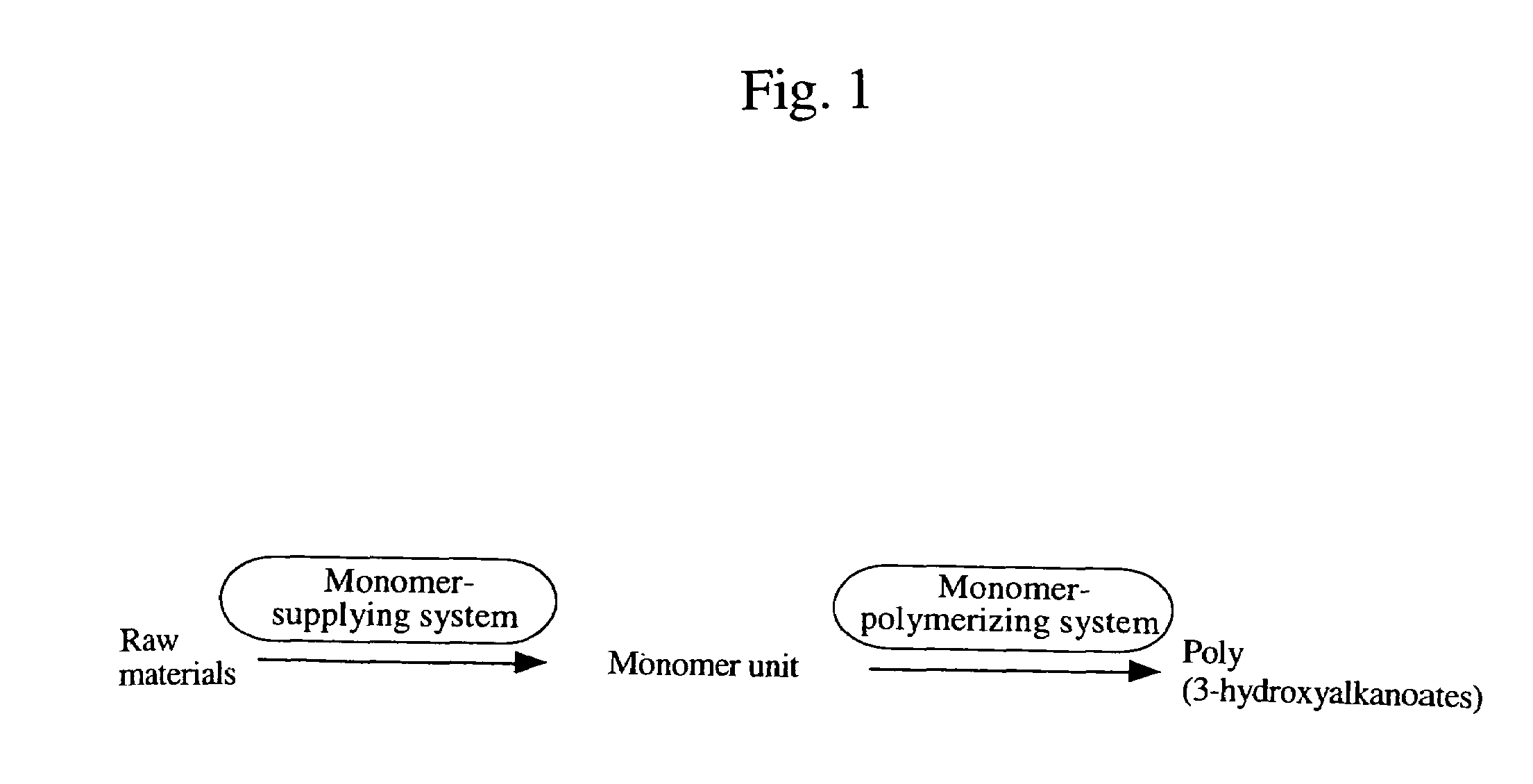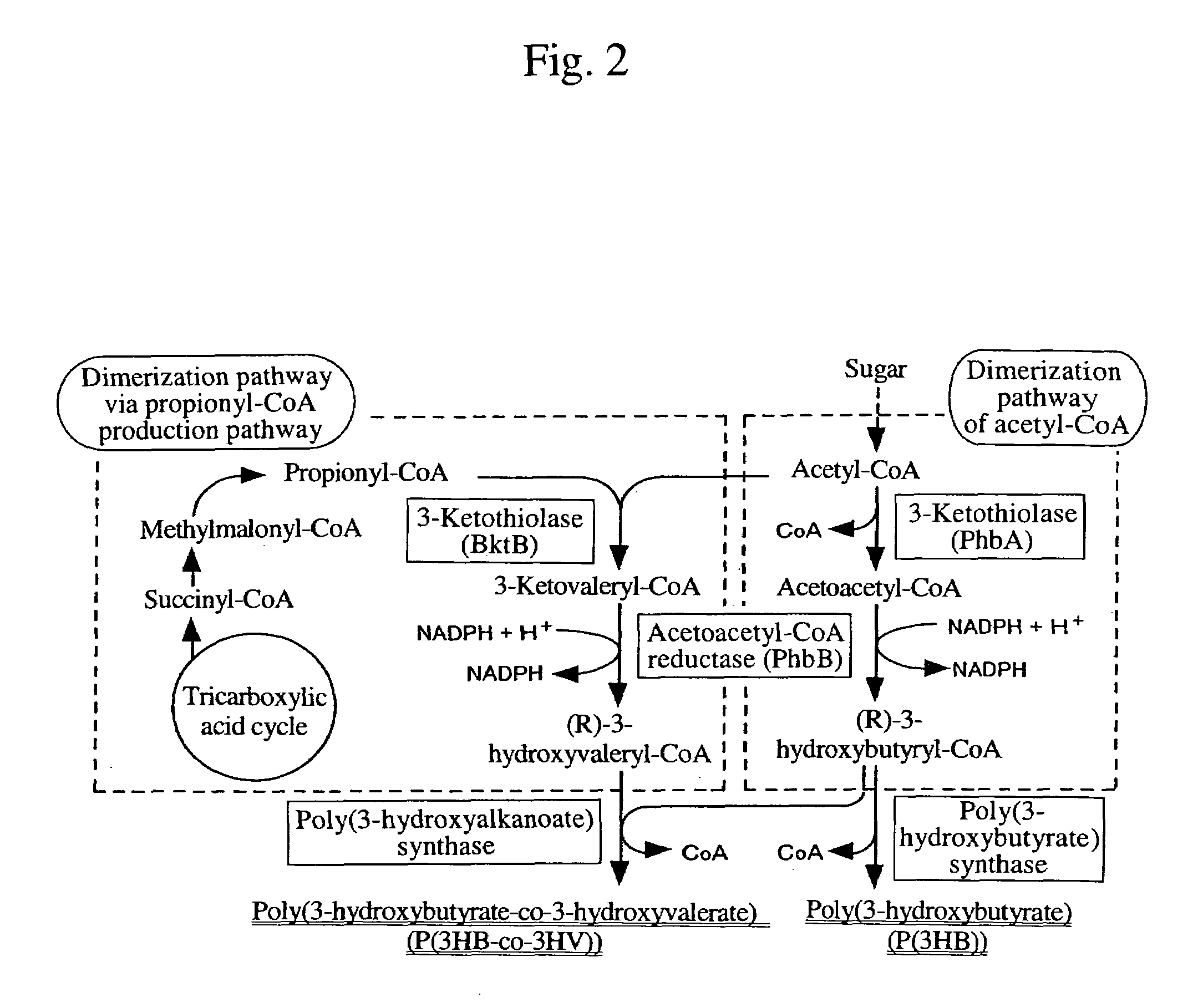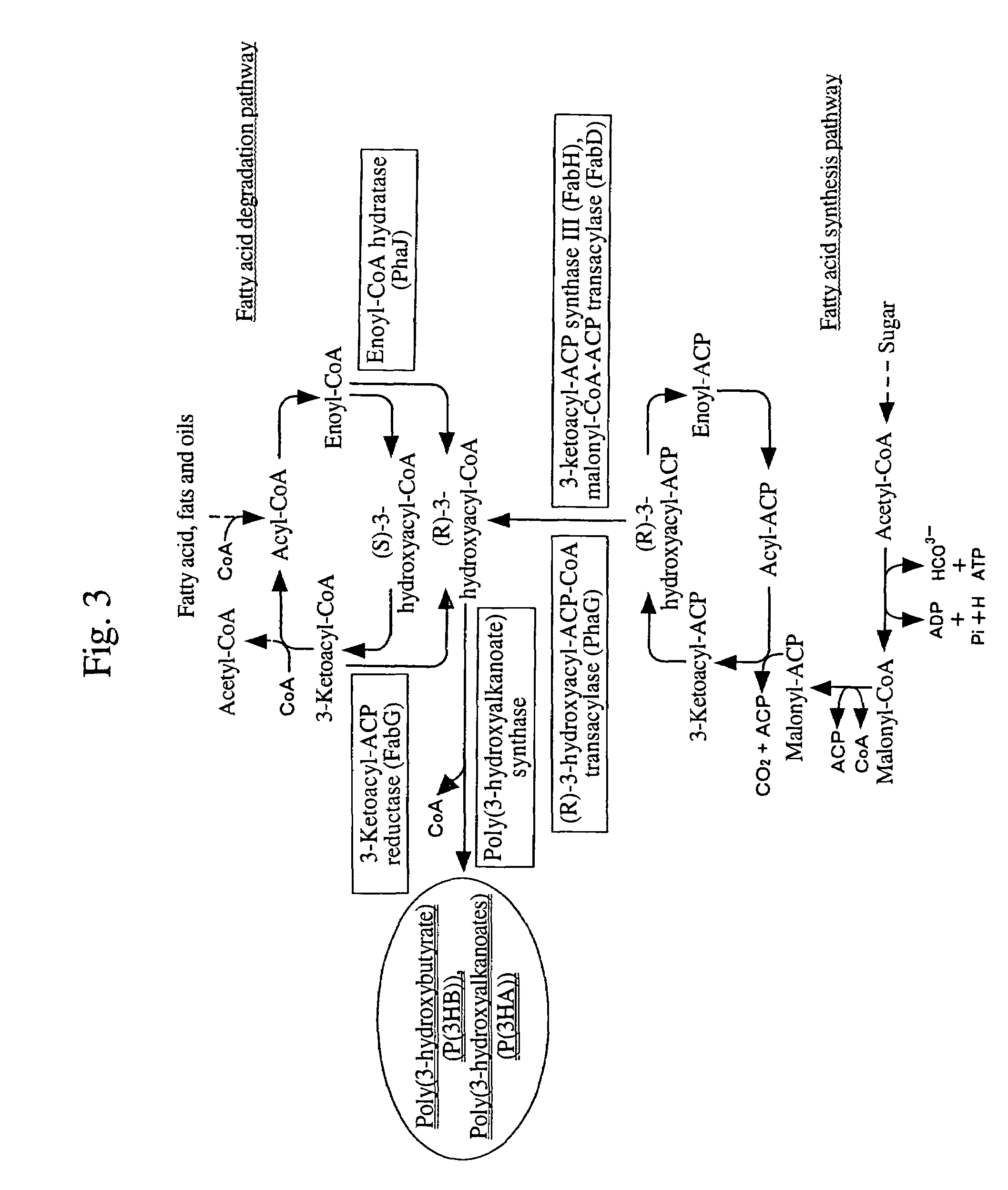Method for producing biodegradable polyester
a biodegradable, polyester technology, applied in the direction of enzymology, dyeing process, transferases, etc., can solve the problems of not yet being able to achieve the compositional ratio effectively, not yet being established, and not yet being able to obtain biodegradable plastics with desired physical properties
- Summary
- Abstract
- Description
- Claims
- Application Information
AI Technical Summary
Problems solved by technology
Method used
Image
Examples
example 1
Alteration of poly(3-hydroxyalkanoate) Biosynthetic Enzyme by Error-Prone PCR
[0070]Random mutagenesis was introduced into the PstI-XhoI region in the gene (PhaCAC) encoding the poly(3-hydroxyalkanoate) biosynthetic enzyme derived from Aeromonas caviae FA440 by the error-prone PCR method. In the error-prone PCR method, an attempt was made to introduce mutations to the whole PstI-XhoI region in PhaCAC without limiting the place of the mutations by carrying out the PCR under a condition where the fidelity for the incorporation of substrates by polymerase is reduced, using the forward primer 5′-gctgctgcagaccaatc-3′ (SEQ ID No: 2) containing the restriction enzyme PstI recognition sequence and the reverse primer 5′-gcctcattttgcgcctcg-3′ (SEQ ID No: 3) containing the restriction enzyme XhoI recognition sequence, and using the plasmid vector pBSEE32phbAB (Refer to FIG. 5) containing PhaCAC as a template. For the PCR, the reaction solution was prepared so that it has the composition shown i...
example 2
[0088]Escherichia coli LS5218 was transformed with mutant type PhaCAC contained in each of ES-50 and T3-11 obtained in Example 1. The accumulation level of P(3HB-co-3HHx) copolymer and the monomer composition composing P(3HB-co-3HHx) in the transformed Escherichia coli LS5218 were studied. It is known that Escherichia coli LS5218 can synthesize P(3HB-co-3HHx) copolymer from dodecanoate. Escherichia coli LS5218 was obtained from E. coli Genetic Stock Center (deposit number CGSC 6966).
[0089]Plasmid vector pBSEE32phbAB containing the mutant type PhaCAC was first purified for each of E2-50 and T3-11 obtained in Example 1 according to the method by Miller. The purified plasmid vector pBSEE32phbAB was then used to transform Escherichia coli LS5218. The transformed Escherichia coli LS5218 was cultured in a M9 medium containing 10 mM of dodecanoate and 50 μg / ml of ampicillin for 72 hours at 37° C. The composition of the M9 medium is shown in Table 2.
[0090]
TABLE 2Na2HPO4•12H2O17.4gKH2PO43gNa...
PUM
| Property | Measurement | Unit |
|---|---|---|
| polydispersity | aaaaa | aaaaa |
| concentration | aaaaa | aaaaa |
| temperature | aaaaa | aaaaa |
Abstract
Description
Claims
Application Information
 Login to View More
Login to View More - R&D
- Intellectual Property
- Life Sciences
- Materials
- Tech Scout
- Unparalleled Data Quality
- Higher Quality Content
- 60% Fewer Hallucinations
Browse by: Latest US Patents, China's latest patents, Technical Efficacy Thesaurus, Application Domain, Technology Topic, Popular Technical Reports.
© 2025 PatSnap. All rights reserved.Legal|Privacy policy|Modern Slavery Act Transparency Statement|Sitemap|About US| Contact US: help@patsnap.com



